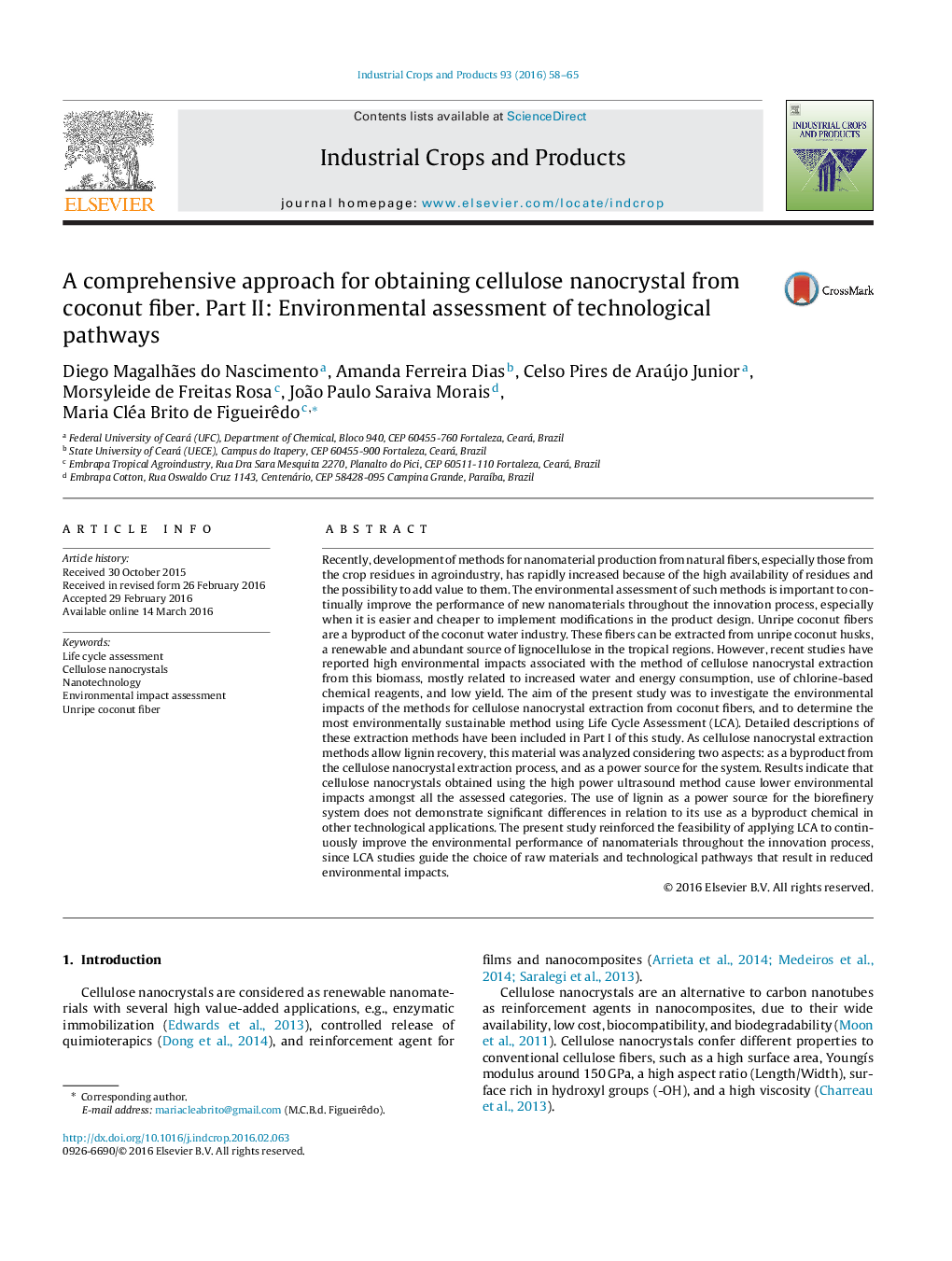| کد مقاله | کد نشریه | سال انتشار | مقاله انگلیسی | نسخه تمام متن |
|---|---|---|---|---|
| 4512055 | 1624817 | 2016 | 8 صفحه PDF | دانلود رایگان |
• We evaluated the environmental performance of four cellulose nanocrystal extraction methods totally chlorine free.
• A less environmentally impacting method for cellulose nanocrystal extraction from coconut fiber was successfully developed, with the aid of Life Cycle Assessment.
• Among the studied methods, cellulose nanocrystal extracted with high power ultrasound presented the smallest environmental impact in all considered categories in the impact evaluation step.
• This study showed that the use of lignin-rich fibers, as coconut fiber, is viable.
Recently, development of methods for nanomaterial production from natural fibers, especially those from the crop residues in agroindustry, has rapidly increased because of the high availability of residues and the possibility to add value to them. The environmental assessment of such methods is important to continually improve the performance of new nanomaterials throughout the innovation process, especially when it is easier and cheaper to implement modifications in the product design. Unripe coconut fibers are a byproduct of the coconut water industry. These fibers can be extracted from unripe coconut husks, a renewable and abundant source of lignocellulose in the tropical regions. However, recent studies have reported high environmental impacts associated with the method of cellulose nanocrystal extraction from this biomass, mostly related to increased water and energy consumption, use of chlorine-based chemical reagents, and low yield. The aim of the present study was to investigate the environmental impacts of the methods for cellulose nanocrystal extraction from coconut fibers, and to determine the most environmentally sustainable method using Life Cycle Assessment (LCA). Detailed descriptions of these extraction methods have been included in Part I of this study. As cellulose nanocrystal extraction methods allow lignin recovery, this material was analyzed considering two aspects: as a byproduct from the cellulose nanocrystal extraction process, and as a power source for the system. Results indicate that cellulose nanocrystals obtained using the high power ultrasound method cause lower environmental impacts amongst all the assessed categories. The use of lignin as a power source for the biorefinery system does not demonstrate significant differences in relation to its use as a byproduct chemical in other technological applications. The present study reinforced the feasibility of applying LCA to continuously improve the environmental performance of nanomaterials throughout the innovation process, since LCA studies guide the choice of raw materials and technological pathways that result in reduced environmental impacts.
Journal: Industrial Crops and Products - Volume 93, 25 December 2016, Pages 58–65
